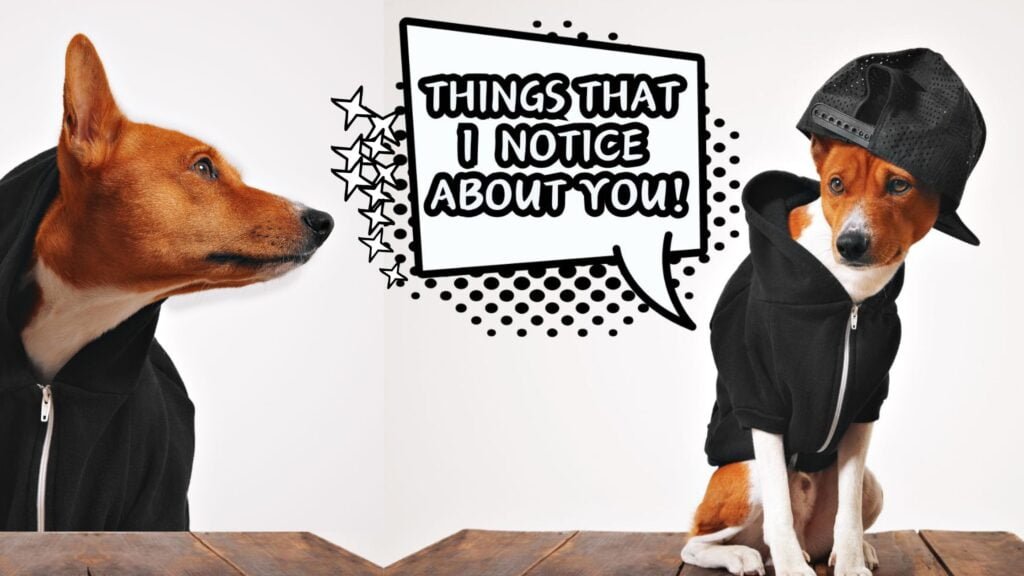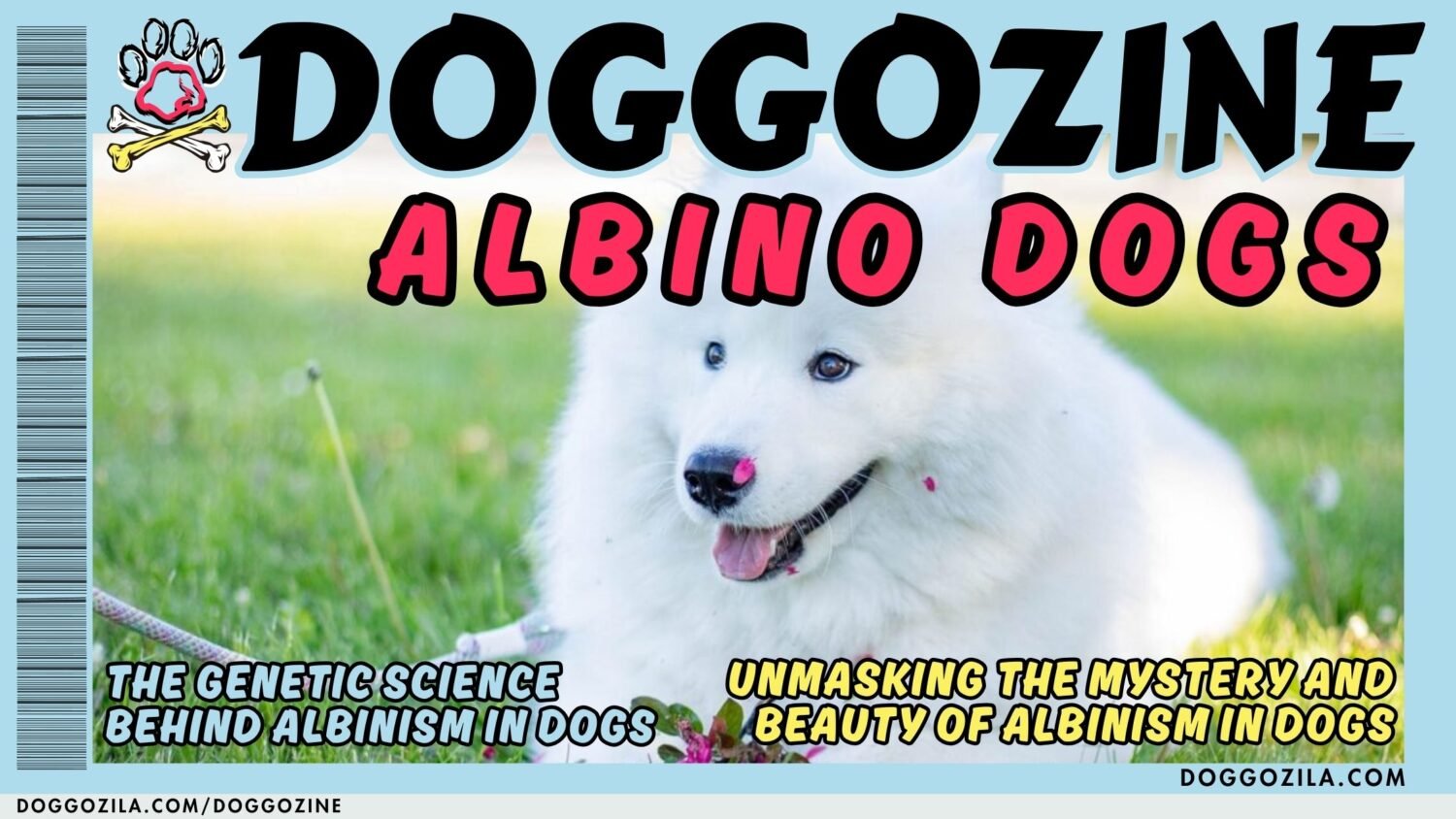Dogs have been our loyal companions for thousands of years, yet their behaviors can still mystify us. One of the most puzzling questions pet owners face is: Do dogs hide when they are dying?
This instinctive behavior is deeply rooted in their ancestry, and understanding it can help us provide better care in their final moments. While not all dogs exhibit this behavior, many seek solitude when they feel weak or vulnerable.
Some may retreat to a quiet corner, while others might try to escape the house entirely. Let’s explore this fascinating and emotional topic in depth.

WHY DO SOME DOGS ISOLATE THEMSELVES BEFORE DEATH?
The idea that dogs hide when they are dying isn’t just an old wives’ tale—it’s backed by both science and observation. Wild canines, like wolves, often distance themselves from the pack when they are sick or injured to avoid attracting predators. Domestic dogs may retain this survival instinct, even if they live in a safe home. Another theory suggests that dogs seek solitude because they feel vulnerable and don’t want to appear weak in front of their human family.
Some experts believe that dogs simply want a peaceful place to rest when they’re in pain. Understanding this behavior can help pet owners recognize when their dog is nearing the end of its life.
The Evolutionary Roots Behind a Dog’s Desire to Hide
When we ask do dogs hide when they are dying, we’re really tapping into thousands of years of canine evolution. In the wild, showing weakness could mean death—predators target the sick and old first. By hiding, wolves and wild dogs protected both themselves and their pack from danger.
Modern dogs may not face predators, but that primal instinct remains strong in many breeds. It’s not about rejecting their human family; it’s about following an ancient survival script written in their DNA. Recognizing this can help us respond with compassion rather than confusion when our pets withdraw.
Signs That Your Dog Might Be Hiding Because It’s Dying
If you’ve ever wondered do dogs hide when they are dying, watch for these key signs: sudden aversion to touch, loss of interest in food, and seeking unusual hiding spots like closets or under furniture. Labored breathing, confusion, and inability to settle comfortably often accompany this behavior.
While not every hiding dog is dying, these symptoms together suggest something serious. Always consult your vet—sometimes what looks like end-of-life behavior is actually a treatable condition. Early intervention can make all the difference in quality and length of life.
Real-Life Stories of Dogs Who Hid Before Passing Away
Countless owners have shared stories that answer do dogs hide when they are dying with heartbreaking clarity. One family’s Border Collie, always the life of the party, spent her last two days curled silently behind the washing machine. A veteran hunting dog was found miles from home, having wandered off to die alone in the woods.
These stories show how deeply ingrained this instinct can be. While not universal, the pattern appears often enough that pet owners should be prepared for this possibility. Every dog’s journey is unique, but many follow this ancient script in their final chapter.
🔑 Key Points: Dogs May Hide When Dying Due to Instinct – This behavior stems from their wild ancestors, who isolated themselves to avoid attracting predators or appearing weak. Domestic dogs may retain this survival instinct.

DO DOGS HIDE WHEN THEY ARE DYING, OR IS IT JUST A MYTH?
While many dogs do exhibit hiding behavior before death, it’s not a universal rule. Some dogs remain close to their owners until the very end, seeking comfort rather than isolation. The difference may depend on the dog’s personality, breed, and individual instincts. Smaller breeds, for example, might be more likely to stay near their humans, while larger breeds with stronger survival instincts may withdraw. So, do dogs hide when they are dying?
The answer is: sometimes, but not always.
Scientific Studies on Canine End-of-Life Behavior
Research confirms that dogs do hide when they are dying and that isn’t just speculation—it’s observed behavior. Studies show sick animals across species often reduce social interaction, and dogs are no exception.
Pain research indicates canines instinctively seek enclosed spaces when hurting, likely for protection.
These findings suggest hiding is a hardwired response to vulnerability. However, dogs raised with constant human contact may override this instinct, explaining why some stay close until the end. Science helps us understand this complex behavior without human projection.
How to Comfort a Dog That Might Be Hiding Due to Illness
When facing with your dying dogs there is nothing you should hide in front of them as they know what they are feeling, at those moments your approach matters tremendously. Never force interaction—sit nearby and speak softly, letting them initiate contact if desired. Keep water accessible and offer high-value foods like chicken or broth.
Create a quiet, dimly lit space with familiar bedding. Most importantly, consult your vet to address any pain or discomfort. Your calm presence provides security, whether they choose to emerge or remain in their safe space. This balance of respect and care honors their instincts while ensuring their needs are met.
Cases Where Hiding Doesn’t Mean the End
It’s crucial to remember that dogs do hide when they are dying and that isn’t the only explanation for this behavior. Stress from fireworks, a new pet, or even a flea infestation can trigger hiding. Medical issues like ear infections or dental pain might also cause withdrawal.
One owner panicked when their beagle hid for days—only to discover he’d gotten into chocolate and was recovering from an upset stomach. Always investigate other possibilities before assuming the worst, as timely treatment could resolve the issue completely.
🔑 Key Points: Signs a Dog Is Hiding Due to Illness – Watch for loss of appetite, aversion to touch, labored breathing, and unusual hiding spots. These signs, combined with withdrawal, may indicate a serious condition.

HOW TO RECOGNIZE IF YOUR DOG IS HIDING BECAUSE IT’S DYING
Recognizing the difference between normal hiding and end-of-life behavior can be challenging. Dogs that are dying often show additional symptoms like loss of appetite, difficulty moving, or irregular breathing. They may also stop responding to their favorite toys or treats. If your dog is hiding and showing these signs, it might be time to prepare for the inevitable. However, only a vet can confirm the severity of the situation.
Fun Fact
Some dogs may seek out quiet, hidden spots when they’re unwell or nearing the end of life—a behavior rooted in their wild ancestors’ instincts. Wolves and wild canids often retreat to dens when injured or ill to avoid attracting predators, and domestic dogs may still carry this survival trait, even in the safety of a home.
Instinctive Den Behavior
Behavioral Changes That Signal a Dog’s Final Days
When considering that your dogs might hide because they are dying, watch for these behavioral shifts: increased sleeping, loss of house training, or aimless wandering. Some dogs pace restlessly while others become unusually still. You might notice changes in breathing patterns or a distant look in their eyes.
These signs often appear alongside hiding behavior, creating a clear picture of decline. Documenting these changes helps your vet assess quality of life and guide you through difficult decisions. Every dog shows different combinations, but these patterns commonly indicate the final stage.
What to Do If Your Dog Is Hiding and Refusing to Eat
A dog hiding and refusing food raises immediate concerns about the fact that dogs do hide when they are dying. First, try offering irresistible foods like warmed chicken baby food or low-sodium broth. Use your fingers to gently offer bites if needed. Ensure fresh water is always available—you can offer ice chips if they refuse to drink.
Keep a food/water log to share with your vet. If refusal persists beyond 24 hours, seek veterinary care immediately. Dehydration and malnutrition accelerate decline, so timely intervention is crucial whether the cause is terminal or treatable.
The Emotional Toll of Watching a Dog Hide Before Death
Witnessing your dog hide when they might be dying is profoundly painful. You may feel rejected, helpless, or guilty—but remember this behavior is instinctive, not personal. Allow yourself to grieve while respecting their process. Sit nearby reading aloud or playing soft music if they seem comforted by your voice.
Many owners find solace in creating paw print keepsakes or writing letters to their pet. These small acts help channel love when traditional interactions are no longer possible. Counseling or pet loss support groups can provide crucial comfort during this heartbreaking transition.
🔑 Key Points: Not All Dogs Hide Before Death – While many dogs seek solitude when nearing the end, others stay close to their owners for comfort. Breed, personality, and upbringing influence this behavior.

DO DOGS HIDE WHEN THEY ARE DYING? EXPLORING BREED-SPECIFIC BEHAVIORS
Not all dogs react the same way when they’re nearing the end of their lives. Some breeds, like huskies and German shepherds, may be more prone to hiding due to their strong survival instincts. On the other hand, lap dogs like Chihuahuas or pugs might prefer staying close to their owners. Understanding your dog’s breed tendencies can help you interpret their behavior better. So, do dogs hide when they are dying? It often depends on their genetic background and personality.
Fun Fact
While many believe dogs hide to spare their owners emotional pain, there’s no scientific evidence that dogs understand death in this way. More likely, they simply feel vulnerable and seek solitude when weak, much like they might hide during a thunderstorm or illness. Still, the idea has inspired countless heartwarming stories of dogs saying a final “goodbye.”
The “Last Goodbye” Myth
Guardian vs. Companion Breeds: Which Dogs Are More Likely to Hide When They Are Dying?
The question do dogs hide when they are dying yields different answers across breeds. Guardian breeds like Mastiffs often withdraw, following ancient protective instincts to avoid showing weakness. Companion breeds like Maltese tend to seek more contact, having been bred for constant human interaction.
Working dogs may show mixed signals—a herding dog might alternate between hiding and checking on their family. These tendencies aren’t absolute, but they provide helpful context when interpreting your dog’s final behaviors.
Stories of Breed-Specific Hiding Behaviors Before Death
Real-life examples illustrate how do dogs hide when they are dying plays out differently by breed. Anecdotes describe Siberian Huskies digging “dens” in closets, while Labrador Retrievers often retreat to cool tile floors. Contrast this with countless stories of toy breeds insisting on being held until their last breath.
One remarkable account tells of a Great Dane who led his owner to the backyard oak tree daily—his chosen resting place when the time came. These breed-influenced patterns help us understand and anticipate our own dogs’ likely needs.
How to Adjust Your Care Based on Your Dog’s Breed
If you’re facing do dogs hide when they are dying, tailor your approach to your dog’s breed tendencies. For independent breeds, create accessible hideaways with orthopedic bedding. For velcro dogs, set up a comfortable nest near family activity.
Giant breeds may need help standing to reach their chosen spot, while small dogs might appreciate being carried to sunny windowsills.
The goal is supporting their instincts while ensuring safety and comfort—whether that means giving space or providing extra closeness in their final days.
🔑 Key Points: Breed Influences End-of-Life Behavior – Guardian breeds (e.g., Mastiffs) are more likely to hide, while companion breeds (e.g., Chihuahuas) often seek comfort from owners. Understanding breed tendencies helps in providing appropriate care.

DO DOGS HIDE WHEN THEY ARE DYING? THE ROLE OF PAIN AND DISCOMFORT
Pain is a significant factor in why dogs might isolate themselves before death. Just like humans, dogs instinctively avoid showing weakness when they’re hurting. Chronic conditions like arthritis or cancer can make movement painful, leading them to seek out secluded spots. Recognizing signs of pain—like whining, trembling, or aggression when touched—can help you intervene early. So, do dogs hide when they are dying? Often, it’s because they’re trying to cope with discomfort on their own terms.
Common Ailments That Cause Dogs to Withdraw
When examining do dogs hide when they are dying, several conditions commonly trigger this behavior. Advanced cancer often leads to hiding as pain increases and energy wanes.
Organ failure like kidney disease may cause confusion and solitude-seeking. Even severe arthritis can make socializing painful, prompting isolation.
Neurological issues like canine cognitive dysfunction sometimes cause dogs to get “stuck” in corners or behind furniture. Identifying the underlying condition helps determine whether comfort care or medical intervention could help.
How Pain Management Can Change a Dog’s Behavior
Effective pain control often dramatically answers do dogs hide when they are dying by bringing withdrawn dogs back into family life. One elderly Boxer on proper pain meds transformed from hiding under desks to enjoying short walks again.
While not all cases are reversible, many dogs show remarkable resilience when their discomfort is managed. Work closely with your vet to find the right combination of medications, physical therapy, and environmental adjustments to maximize quality time.
When to Consider Euthanasia for Suffering Dogs That Are Dying?
If your dog is chronically hiding with no relief from pain management, euthanasia may be the kindest choice. Watch for inability to enjoy any activities, constant distress, or loss of basic bodily control.
The “five freedoms” assessment (freedom from hunger, discomfort, pain, fear, and freedom to express normal behavior) helps guide this difficult decision.
While saying goodbye is agonizing, releasing a suffering pet from pain is the ultimate act of love—even if their hiding instinct makes the process feel more solitary.
🔑 Key Points: Pain and Discomfort Often Trigger Hiding – Dogs instinctively retreat when in pain. Proper pain management can sometimes reverse this behavior, improving their quality of life in their final days.

MYTHS VS. FACTS: DO DOGS HIDE WHEN THEY ARE DYING?
Many misconceptions surround canine end-of-life behavior. Some people believe dogs run away to die alone out of spite, while others think every hiding dog is terminally ill. Separating fact from fiction helps us respond appropriately to our pets’ needs. So, do dogs hide when they are dying? Let’s bust some myths and uncover the truth.
“My Dog Is Hiding to Punish Me” – Why This Isn’t True
The idea that do dogs hide when they are dying reflects anger is completely false. Dogs lack the complex emotional capacity for spite or revenge. Their withdrawal stems from instinct or physical distress, not emotional calculation.
This myth causes unnecessary guilt—your dog isn’t rejecting you; they’re following deeply ingrained survival behaviors. Understanding this helps us respond with appropriate medical care rather than misplaced hurt feelings.
“All Dogs Want to Hide and Be Alone When They Are Dying” – The Exception
While dogs do hide when they are dying often gets answered “yes,” many dogs defy this expectation. Countless owners report their pets seeking extra closeness in final hours—nuzzling hands or maintaining eye contact.
Some even seem to “say goodbye” with sudden bursts of energy and affection. These cases remind us that every dog’s journey is unique. The key is observing your individual pet’s needs rather than assuming they’ll follow any predetermined pattern.
How Cultural Beliefs Shape Our Views on Dying Dogs
Cultural lenses heavily influence how we interpret do dogs hide when they are dying. Some traditions view a dog’s departure as a spiritual transition, while others see it as a medical event. These perspectives, while meaningful, shouldn’t override veterinary advice.
Whether you believe your dog is “crossing the rainbow bridge” or simply following instinct, prioritize their physical comfort above all symbolic interpretations during this vulnerable time.
🔑 Key Points: Hiding Doesn’t Always Mean Death Is Near – Stress, illness, or environmental changes can also cause withdrawal. Always consult a vet to rule out treatable conditions before assuming the worst.

CREATING A PEACEFUL GOODBYE: HOW TO HELP DOGS THAT HIDE WHEN THEY ARE DYING
If your dog is hiding because they’re dying, you can still make their transition gentle and loving. Whether they choose solitude or closeness, your role is to minimize suffering and maximize peace. Here’s how to honor their instincts while ensuring they feel safe.
Fun Fact
Some dogs that sense they’re nearing the end of life may seek out enclosed, cozy spots—like under beds, in closets, or behind furniture. This behavior might be less about “hiding” and more about finding a quiet, safe place to rest when they feel weak or unwell, much like how they might curl up in a favorite den-like spot during stressful times.
“The Comfort of Small Spaces”
Setting Up a Comfortable “Sanctuary Space”
For dogs who hide when dying, transform their chosen spot into a haven. Place waterproof pads under bedding for accidents, and add familiar-smelling items like your worn t-shirt. Use nightlights to help disoriented dogs navigate if they move at all.
Keep the area quiet but accessible for monitoring. This approach respects their instinct while ensuring their physical needs are met—the perfect balance when facing this difficult situation.
The Power of Presence: When to Stay and When to Give Space
Navigating does dogs hide when they are dying requires reading subtle cues. Some appreciate quiet company—try reading aloud or doing calm tasks nearby. Others clearly want solitude; respect growls or avoidance signals.
A good rule: stay close enough to monitor, but far enough to avoid stress. Many dying dogs alternate between seeking brief contact and retreating—follow their lead moment by moment without taking withdrawals personally.
Final Gifts: Special Treats and Memories
Even if your hiding dog shows little interest, offer favorite experiences: a lick of peanut butter, gentle brushing, or fresh air on a carried walk. Create keepsakes like nose prints or fur clippings—these comfort many owners later.
Play their “happy time” music or show videos of their puppy days. These small gestures honor your bond while accepting their gradual withdrawal—a bittersweet but meaningful way to say goodbye when the answer to do dogs hide when they are dying is yes.
🔑 Key Points: Respect Their Need for Space While Offering Comfort – If a dying dog hides, provide a quiet, safe space but remain nearby. Soft spoken words, familiar scents, and gentle presence can offer reassurance without forcing interaction.

DO DOGS HIDE WHEN THEY ARE DYING? WHAT SCIENCE SAYS ABOUT THE AFTERMATH
After a dog passes, many owners wonder if their pet’s hiding behavior held deeper meaning. Researchers have studied animal death rituals, though canine-specific data is limited. What we do know suggests that dogs’ final actions are more about instinct than conscious choice.
Can Dogs Sense Their Own Death? The Evidence
While dogs do hide when they are dying is well-documented, their awareness remains mysterious. Unlike elephants who visit “graveyards,” dogs show no conclusive death rituals.
However, many observe their pets exhibiting “last surge” behaviors—sudden energy to visit favorite spots or people.
This suggests possible awareness, though science can’t yet confirm. What matters most is that their final moments are peaceful, whether spent hidden or in your arms.
How Other Pets React to a Dying Dogs When They Hide
Multi-pet households notice fascinating dynamics when dogs do hide when they are dying plays out. Some animals avoid the hiding dog completely, while others stand guard. Cats may hiss at changed pheromones, or unusually groom their old friend.
These reactions likely respond to biochemical changes rather than understanding death. After passing, surviving pets may search or vocalize—normal grief behaviors that typically resolve within weeks. Providing extra attention helps them adjust.
Helping Children Understand Why the Family Dog Is Hiding
When explaining do dogs hide when they are dying to kids, use clear, concrete terms: “Rover’s body isn’t working right, so he’s resting where he feels safe.” Avoid confusing euphemisms like “put to sleep.”
Include them in appropriate goodbyes—drawing pictures to place near the hiding spot or sharing happy memories. Children often process pet loss well when given honest, age-appropriate information and ways to express their feelings.
🔑 Key Points: Grieving a Hiding Dog Can Be Emotionally Challenging – Owners may feel helpless or rejected, but understanding that this behavior is instinctive—not personal—can ease guilt. Memorializing their life helps in healing after loss.

MOVING FORWARD: HEALING AFTER YOUR DOG’S PASSING
Losing a dog is devastating, especially if their final days were spent in isolation. Allow yourself to grieve—your feelings are valid. Over time, the pain eases, leaving behind cherished memories and life lessons taught by your loyal friend.
Honoring a Hiding Dog’s Legacy
Create memorials reflecting your dog’s unique spirit—plant a tree over their favorite hiding spot, or commission art using their paw print. Volunteer at shelters in their name, helping other shy dogs find homes.
Some owners find comfort in writing “letters from Rainbow Bridge” imagining their pet’s perspective. These acts transform grief into celebration of a bond that death can’t erase.
When to Consider a New Canine Companion
There’s no universal timeline after facing the dying of your dogs and nothing can hide that. Some heal by fostering seniors needing end-of-life care, while others need years before adopting.
Watch for when dog videos bring smiles more than tears—a sign your heart is ready to love again. Your next dog won’t replace the one you lost, but will write a new chapter in your life’s canine love story.
Final Thoughts: Do Dogs Hide When They Are Dying?
The answer is as individual as dogs themselves. Many follow ancient instincts to seek solitude, while others cling fiercely to their humans. Whatever path your dog chooses in their final days, know that your love gave them the greatest gift—a life filled with security and joy.
While their hiding may make goodbye feel more solitary, your bond transcends those last physical moments. In the quiet after their passing, may you find peace in the countless memories made before those final, instinct-driven days.









